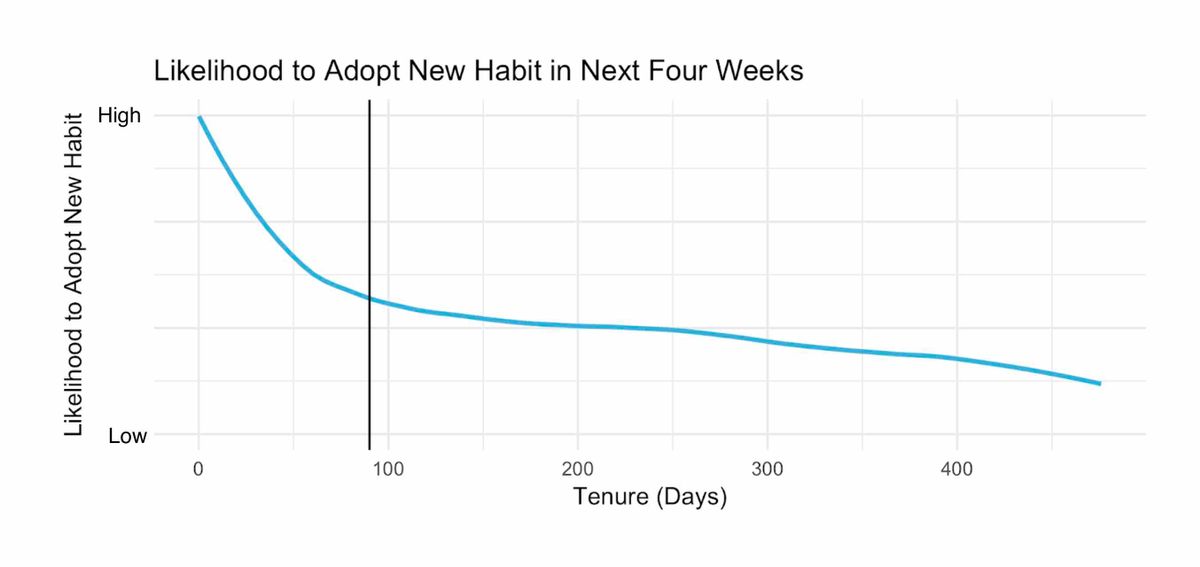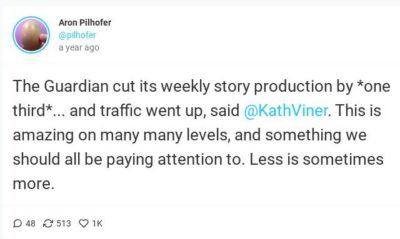The world of digital publishing has continued to be extremely competitive. Ultimately, today’s most successful publishers are investing more in reader engagement than on reader acquisition.
For instance, the Financial Times now spends three times more on reader engagement than acquisition. 59% of publishers, however, do the opposite. Top-performing publishers like the FT are also seeing that less is more when producing content. The old strategy of trying to maximise clicks and pageviews is over. Instead, reader engagement rules the day.
In this article, I want to further explore reader engagement. Specifically, I will cover
- why engagement matters,
- how you can measure reader engagement,
- and selected engagement best practices.
1 Why reader engagement matters
Reader engagement is so critical for several reasons. That said, one of the most critical reasons is that it can raise a publisher’s bottom line.
According to media analyst Thomas Baekdal, leaders care less about the number of articles being published. Instead, they are looking for quality and articles that pique their interest. Eliminating the fluff and offering high-quality articles leads to more subscribers and ad revenue. Intuitively, this makes sense. Readers who find your content relevant and professional will further engage with it. They will continuously return to your website as they know you deliver top-notch content. Along with this, they will retweet your articles and spread the word with friends and family. It leads to a cascading effect, thereby increasing revenue growth.
There are plenty of examples of this in the real world. Publishers like The Guardian, The Times of London, and Le Monde have made it a priority to trim the number of articles offered to readers. This has led to growth in things like audience traffic, dwell times, and subscriber counts. The Post and Courier of South Carolina, for example, saw digital subscription growth of 250% from 2017 to 2019. It achieved this growth by shifting its focus from pageviews to time spent and engaged minutes on its website.
“We could eliminate half of our journalism and our traffic really wouldn’t change – if we replaced it with nothing. What if we replaced that with content readers really wanted?”
Josh Awtry, Senior Director News Strategy at USA Today Network
Ultimately, this act of replacing content with what readers really want goes a long way in increasing profits. In this era of increased competition, this is a welcome development.
2 How to measure reader engagement
So clearly, reader engagement is something that digital publishers should be taking much more seriously. That is only one part of the equation, however. Along with knowing its importance, you must have a plan on how you can track and measure reader engagement.
To better understand how to do this, it is helpful to study some top-tier publishers. While your publishing company doesn’t necessarily have to copy these metrics, they are often a good start. Think about using them as you try to increase reader engagement.
Financial Times & Wall Street Journal
The Financial Times, for instance, developed a proprietary engagement score that is based on a mix of recency, frequency, and volume. The Wall Street Journal takes a slightly different approach. It tracks reader engagement by relying on a metric called active days. Active days is essentially the number of days that a reader engages with content on the Wall Street Journal’s website. The Wall Street Journal also has a so-called “Habit Project”. It uses 16 different “engagement opportunities” to increase the length of time that WSJ readers stay on the website.

The Telegraph
The Telegraph takes yet another approach. Here, the renowned London publisher places a high priority on total subscriptions. While this publisher hasn’t publicly explained why this is, I assume that Telegraph executives believe that total subscriptions signal that individuals are so satisfied with Telegraph content that they are willing to spend their hard-earned cash to get more.
Seattle Times
Finally, the Seattle Times is another great example of a publisher using a blended approach. Here, the publisher tracks three different types of use metrics. Those metrics are engagement, ad viewability, and dwell time. But along with these three overarching metrics, the newspaper digs deeper. It tracks 45 separate actions when readers are consuming its content. Some of those actions include page scrolls and mouse movements. According to the Seattle Times, these metrics led the publisher to notch over $30,000 in additional revenue.
Ultimately, there are other KPIs that may be helpful. Your team may want to focus on things like dwell time (also known as session duration), bounce rate, and returning visitors. Whatever you choose, the list above is a good start in helping you measure reader engagement for your website.
3 Best practices for reader engagement
Maximising reader engagement requires significant amounts of experimentation and analysis. It won’t happen overnight. Instead, your team will need to see how your audience is responding to your shift to prioritise reader engagement. From there, you can double down on what’s working and avoid what isn’t working.
Le Monde
The first way to increase reader engagement, as alluded to above, is publishing fewer, high-quality articles. Le Monde provides a great example here. In 2017, it began an effort to focus on engagement over quantity. As part of this, the French publisher decided to reduce the number of its articles by 25% while growing its overall staff to 500 journalists. In the past, this may have seemed counterintuitive, as publishers wanted to maximise clicks. That said, by reducing the number of articles, Le Monde actually achieved increases in its online audience and print and digital circulation.
Times of London
The same is true of The Times of London. In the summer of 2019, the British newspaper published 15% fewer stories in its digital Home News section. It did so after discovering that stories with additional or exclusive content were overperforming versus those stories that didn’t have that content. By focusing on this type of content, the newspaper saw a 25% rise in dwell time.

So as a starting point, reducing story count and increasing quality can help increase reader engagement. Beyond that, you may want to consider leveraging email. Email is a critical part of engagement strategies because of the relationship that it builds between the reader and the publisher. Whether you decide to leverage onboarding emails, frequent newsletters, or something else, creating that direct relationship with readers can pay off in spades. At this point I would like to mention Les Echos and The New York Times.
Les Echos & New York Times
Les Echos, for instance, discovered that readers who receive email correspondence were more loyal than those who arrived at Les Echos content from search or social media. The New York Times also found that newsletter subscribers are two times as likely to become paying subscribers versus non-newsletter subscribers. Therefore, keep email in mind as you work to increase user engagement.
4 What are the key takeaways?
It’s well worth your time to increase reader engagement. When doing so, you’ll want to keep several things in mind.
- First, build habits and reward users who regularly visit your website. There are several helpful tips here, but the bottom line is that building habits will go a long way in creating sustained reader engagement.
- Next, make sure that you are nudging your email subscribers. Specifically, target those subscribers with the highest propensity to churn. Publishers like Canada’s Globe and Mail have had major success with this tactic.
- Third, eliminate the content that nobody reads. It’s cluttering your website and isn’t serving anyone. The Times of London did this and found that eliminating poorly-performing content was a great way to provide even more value to readers.
- Fourth, surprise your readers with unexpected gifts. This is yet another way to show readers that you treasure their attention and engagement. As just one example, The Atlantic has sent little rewards to readers—including a baby present to a special reader.
- Finally, think about enhancing reader engagement with technology. Die Welt, the German news giant, uses AI-based technology to automate and optimise article linking. This task increases dwell time and engagement. Also, publishers can use text-to-speech technology like Amazon Polly to boost engagement by keeping readers on a certain page for a longer period.
Conclusion
Increasing reader engagement is one of the most productive things that your publishing company can do. It not only makes readers happier, but leads to increased profits for your publishing company. To put it another way, it is a win-win for your company and your readers.
Therefore, take this task seriously. Make sure that you are listening to your readers. Keep in mind that less content is more. Prioritise the valuable and cut off the non-valuable. Along with this, make sure that you are measuring what matters. Finally, consider the benefits of technology when increasing reader engagement.
Increasing reader engagement is certainly an investment. That said, the best time to get started is now. Doing so, you can capitalise on everything that increased reader engagement has to offer.
This article was first published on purplepublish.com










